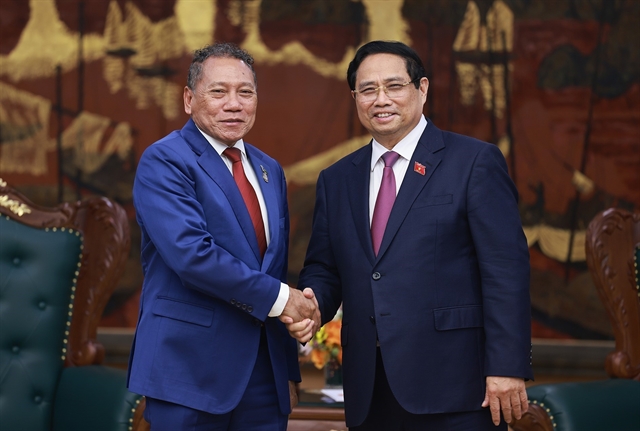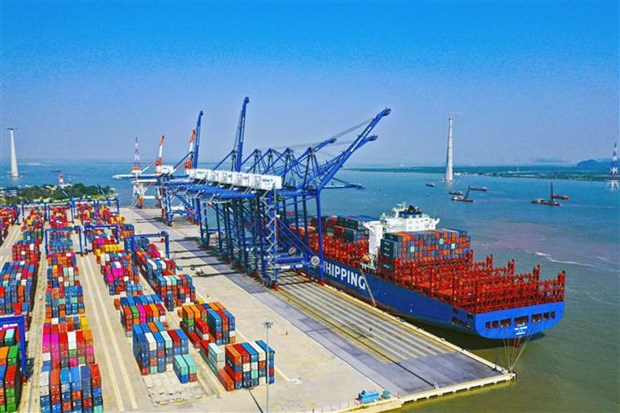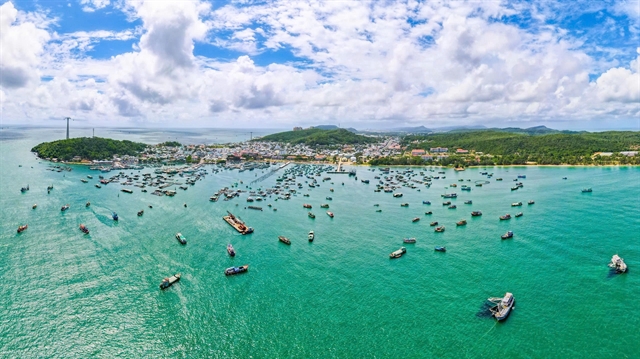 Society
Society


|
| Lạch Huyện international deep-water port in Hải Phòng CIty. — VNA/VNS Photo Đức Nghĩa |
HẢI PHÒNG — Improved transport and tourism infrastructure has boosted the socio-economic development of Hải Phòng City over the past five years.
According to the city’s People’s Committee chairman Nguyễn Văn Tùng, in 2021-2030, the city plans to build more than 100 bridges with a total investment of some VNĐ83 trillion (US$3.6 billion).
In 2015-2020, Hải Phòng built 45 bridges, including the Tân Vũ-Lạch Huyện bridge - one of the longest sea bridges in Southeast Asia with a length of about 16km.
The bridge not only shortens the travel time from Hải Phòng to Cát Bà Island but also serves as a trade connection between the city and other countries through Lạch Huyện Port.
Another bridge that has connected traffic between Hải Phòng’s inner city and Thuỷ Nguyên District, as well as a tourist highlight of the port city, is Hoàng Văn Thụ Bridge belonging to the technical infrastructure project in the new urban area of northern Cấm River.
This bridge is known as the most beautiful bridge in Hải Phòng.
The Hoàng Văn Thụ Bridge’s operation is one of the steps contributing to the completion of the new city centre planning.
In addition to the outstanding development of its road transport system, Hải Phòng has also strengths in terms of its seaports.
Lạch Huyện deep-water seaport was put into operation in 2019 and became the first port in the northern region to receive large tonnage ships of 12,000TEU and 132,000 DTW transporting goods directly to Europe and the Americas instead of transiting via foreign ports as before.
Chairman of the Việt Nam Chamber of Commerce and Industry Vũ Tiến Lộc said: “With the advantage of being the main gateway to the sea of the whole northern region, Hải Phòng has a strategic location playing a vital role in the development of the northern key economic regions.”
“In particular, Hải Phòng holds a key position in the 'Two Corridors - One Economic Belt' Co-operation between Việt Nam and China as well as is an area with strategic relationships with major growth poles in East Asia and Southeast Asia,” Lộc added.
The city’s economic indicators last year and the first four months this year, increased by 1.5 to 2 times compared to other localities nationwide despite the complex developments of the COVID-19 pandemic.
Minister of Industry and Commerce Nguyên Hồng Diên said: “Hải Phòng is currently a ‘fertile land’ for both domestic and foreign investors”.
A representative of the Hải Phòng Economic Zone Management Board said that as of April this year, the city has 770 projects with a total investment capital of more than $20.669 billion.
From the beginning of this year, the city saw 12 new projects registered with a total investment capital of $87.81 million and 20 projects which increased their capital by a total of $914.55 million.
The projects are mainly in the processing and manufacturing industries.
In 2021-2025, the city plans to establish 15 new industrial parks with an area of more than 6,400 hectares.
In addition to attracting investment, the development of transport infrastructure has helped make tourism a key economic sector of the port city.
According to vice chairman of the city People's Committee, Lê Khắc Nam, before 2012, Hải Phòng's tourism industry always failed to meet its targets but from 2013, the number of tourists coming to the city has increased year by year, especially in 2016-2021, when the number of tourists increased by an average of 20 per cent per year.
“In 2021-2025, Hải Phòng identified tourism as one of the three pillars of the city's economic development,” said Nam.
“To develop the industry, the city focused on infrastructure to attract big investors in this field,” he said.
By the year 2025, there will be six more 5-star hotels put into operation, raising the number of 5-star hotels to 10.
Cát Bà Island, coastal Đồ Sơn District and Vũ Yên Island are three key tourist destinations of the city, he added. — VNS




